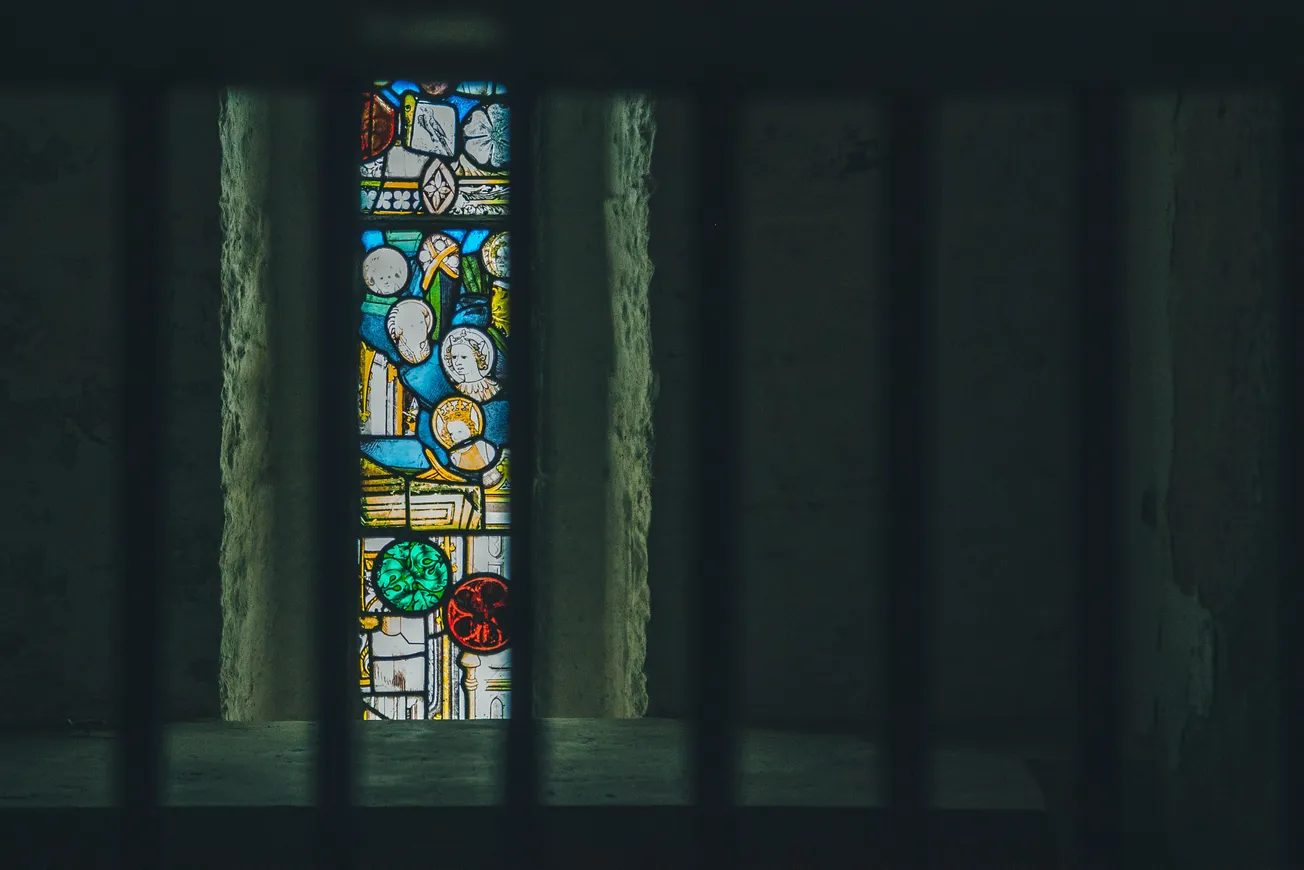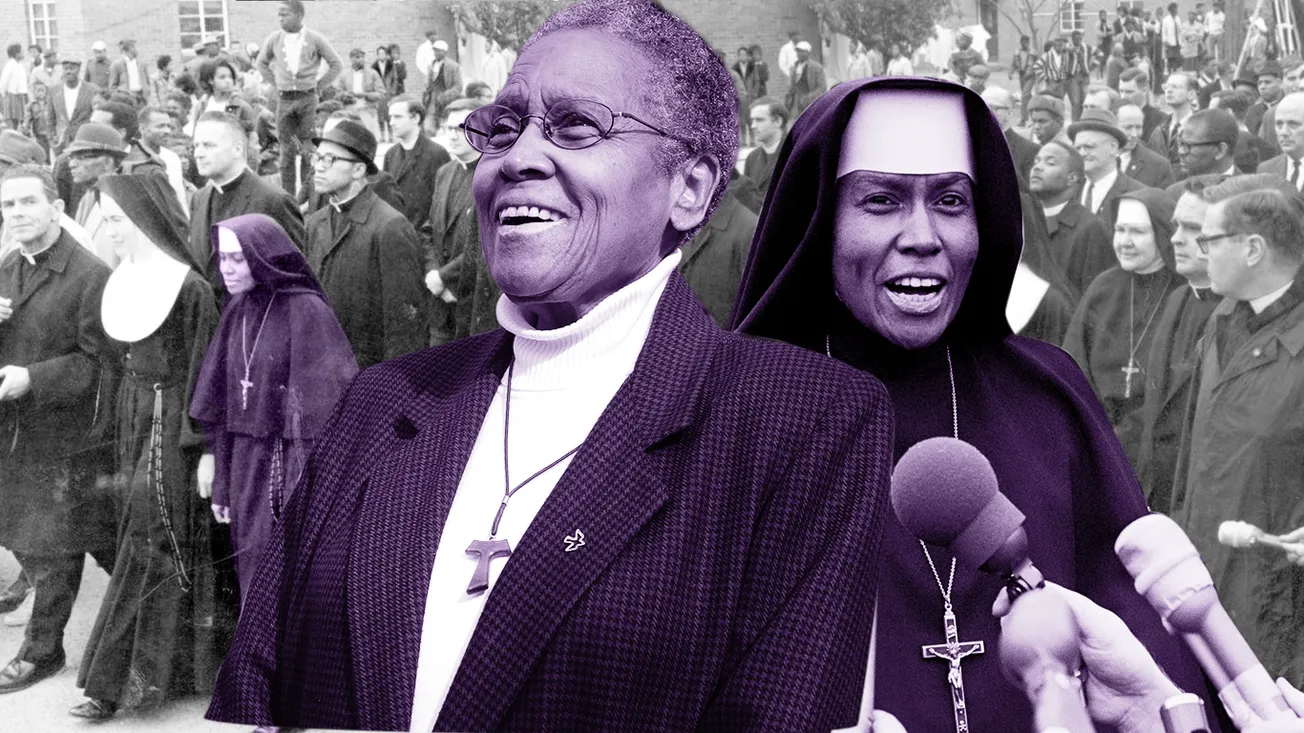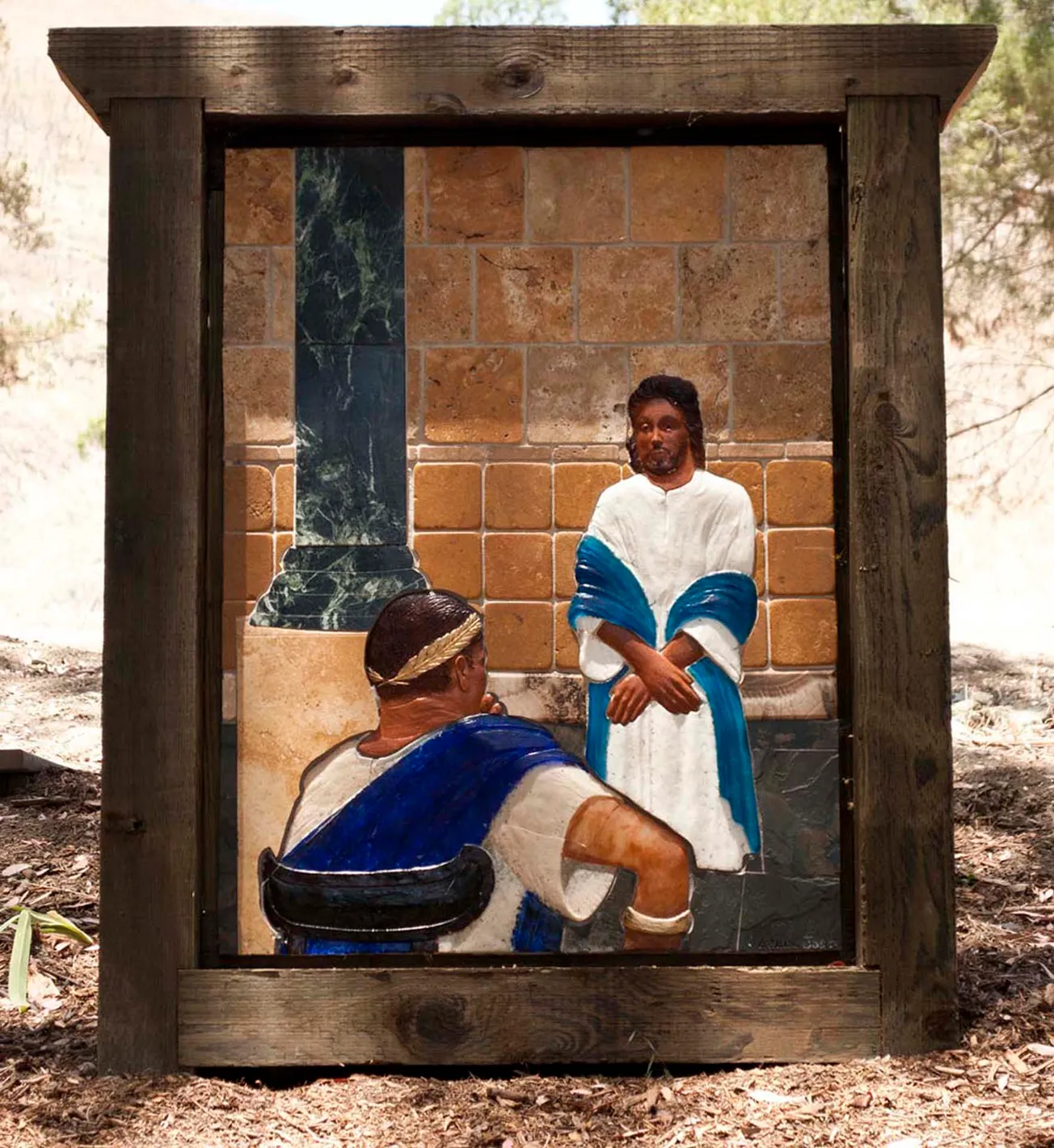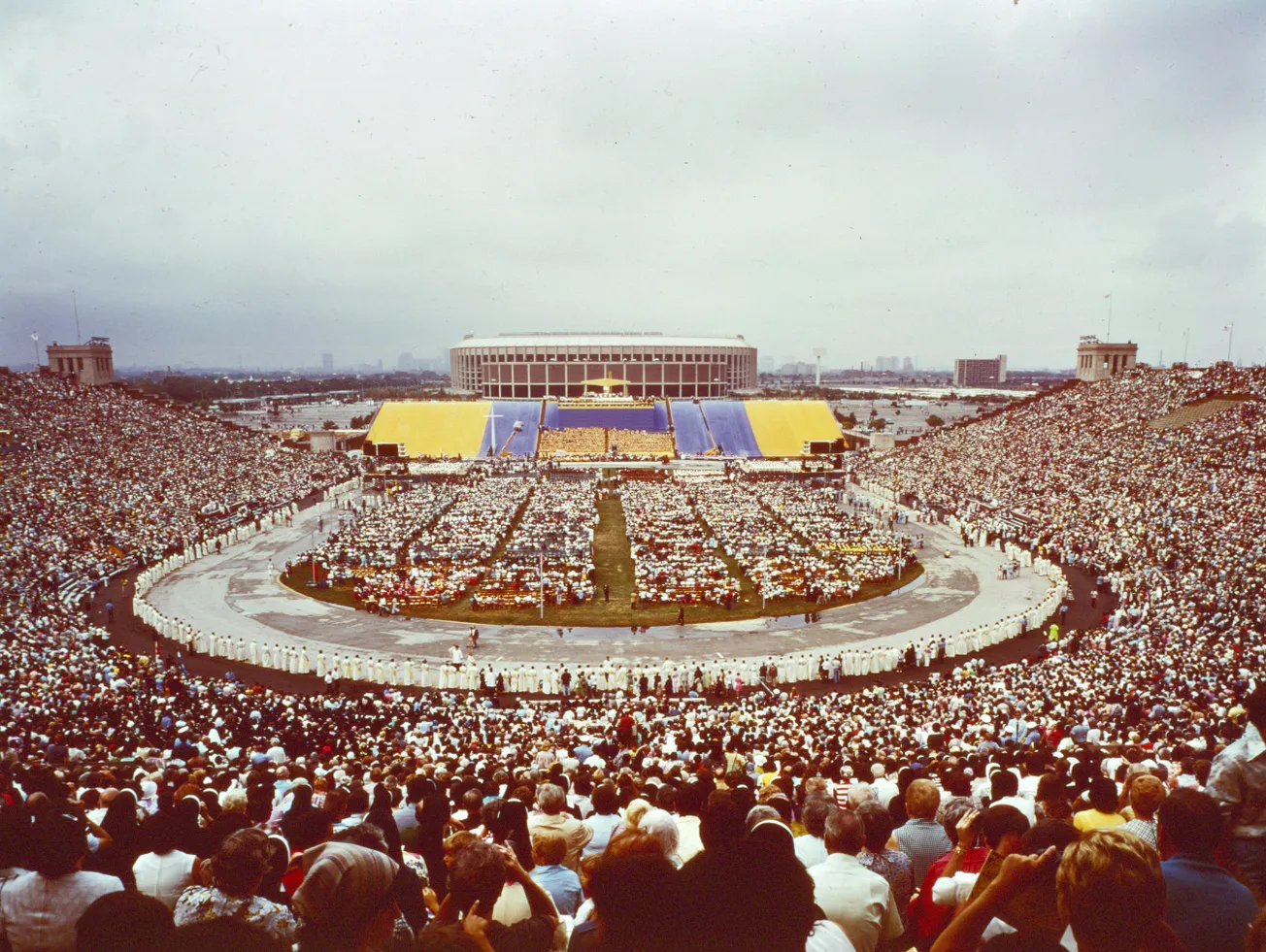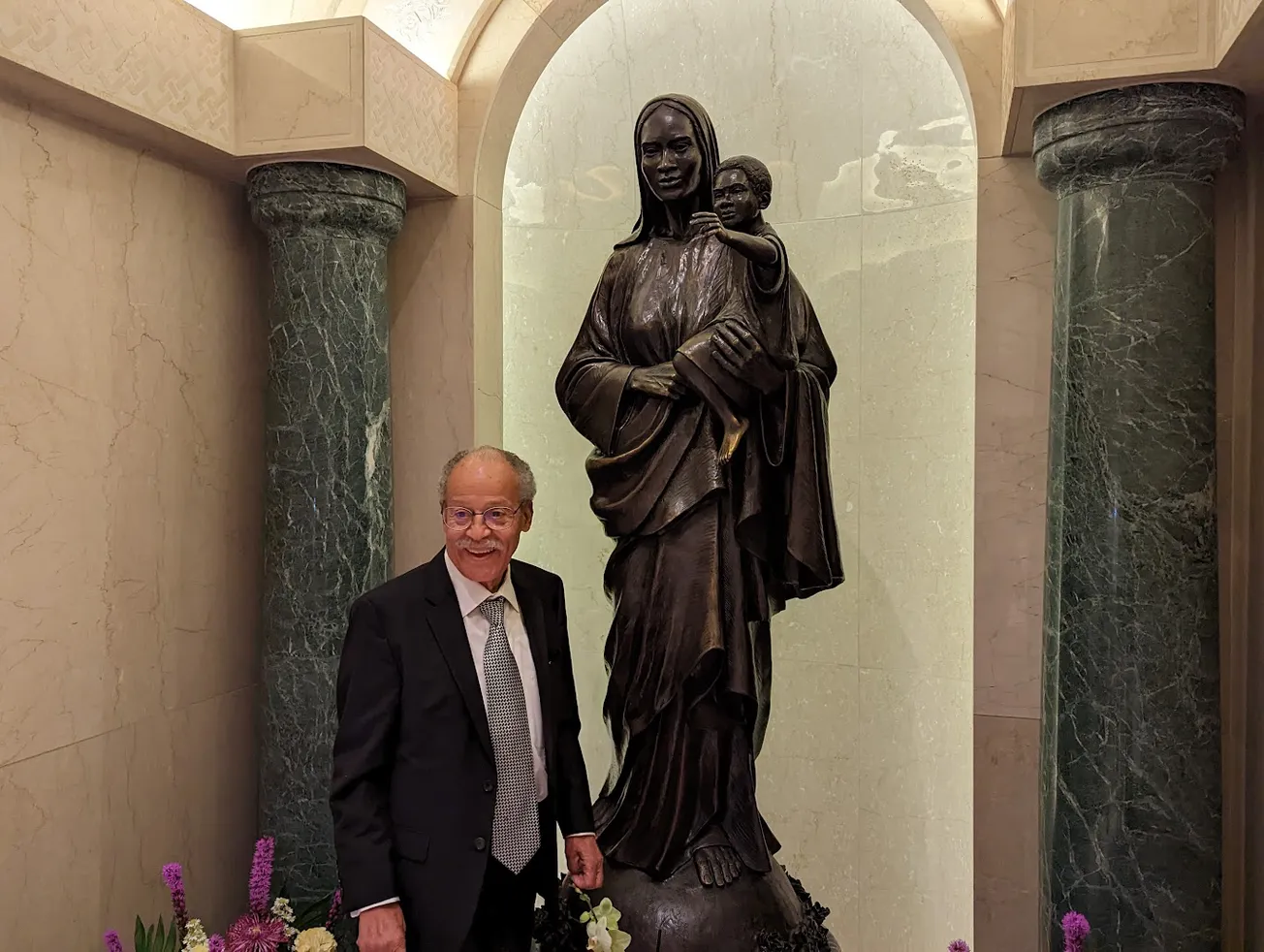“O nata lux de lumine, Jesu redemptor saeculi.”
These were the words emanating from my Sony boombox as a child. I did not know what the choir was singing, I had no understanding of the language, but the heavenly sounds soothed my heart. It was Morten Lauridsen’s setting of the Latin hymn with the opening line: “O Light born of Light, Jesus, redeemer of the world.”
I would listen to it on a CD gifted to my parents by a family friend. This was my introduction to sacred and liturgical Latin.
It would be years before I’d discover the significance of this music that blessed my childhood. The initial blessing, however, would eventually be followed by the public scandal that is Catholics fighting over the Roman Rite of the Mass, especially within the year following Pope Francis’ 2021 apostolic letter “Traditionis Custodes” (TC). In the midst of drama like this, I eventually had to discern my own relationship with liturgy and sort the blessings from the stumbling blocks.
Aside from the familiar “Gloria in Excelsis Deo” at Christmas, Latin was not a part of my spiritual upbringing. I was raised in the Black Baptist tradition, so English reigned in my community's worship. It was in King James English that I came to know Jesus Christ and his Gospel. It was in English that I prayed, heard testimony and preaching, and participated in sacred ordinances. It was in this language that I was given my first reverence for tradition—a tradition which revealed itself on occasions like when the church sang an old “Dr. Watts” metered hymn.
Named after 18th-century British composer Isaac Watts, these special songs and many others like them were passed down over generations, forming an unbroken connection of faith to our ancestors who had been enslaved. In my own community’s sanctified language and in our familiar sacred traditions, I received my faith. My respect for tradition tied together with fidelity to Gospel truth was a profound way that God led me to Catholicism during my college years. It was no surprise, then, that at the beginning of my embrace of the Catholic faith, the ancient liturgical traditions of the Mass drew me in.
I can remember being so excited in a university-level Christianity course as we read a translation of a primary historical document from the 3rd century:
“The Bishop: The Lord be with you.
People: And with thy spirit.
B.: Lift up your hearts.
P.: We lift them up unto the Lord.
B.: Let us give thanks unto the Lord.
P.: It is meet and right.
B.: We give thee thanks, O God, through thy beloved son, Jesus Christ, whom thou didst send to us in the last times to be a saviour and redeemer and the messenger of thy will; who is thy inseparable Word, through whom thou madest all things, and in whom thou wast well pleased.”
(Documents of the Christian Church)
These are words and a formula that we use in the Mass to this day. I felt such joy from reading that document, and others, that demonstrated how ancient our liturgical practice is. It strengthened my faith, and going to Mass became a connection to an even more vast tradition. My musical tastes also expanded into classical vocal music, sparked by my first encounters during childhood with composers like Lauridsen.
I began to realize much of the classical music I listened to, often in Latin, was drawn from sacred liturgical texts and prayers of the Church. Soon, I would be familiar with the Latin Sanctus, the Agnus Dei, as well as various ordinaries and motets of the Roman Mass. With this newly familiarized language and form of worship, I mapped onto Latin and classical sacred music the reverence for tradition I had been taught in my youth. It was second nature for me to adapt from Black sacred tradition, language, and understanding to equivalents in a new context.
At some point, though—and I cannot remember what made me aware of it—I heard about the existence of a Mass that was completely in Latin (except the homily). The priest, instead of standing behind the altar and facing the congregation during Mass, would stand in front of the altar and face “liturgical East” to the back wall with the congregation looking on from behind him. This different Mass intrigued me with its aesthetics and use of Latin, to which I formed an attachment by having already fallen in love with Latin polyphony and chant. This Traditional Latin Mass (TLM), promulgated in 1962, would eventually become what I regularly attended for Sunday liturgy. That being said, what began as an aesthetic and linguistic preference quickly transformed into a theology detached from and hostile to the wider Church and magisterium.
It began with parishioners mentioning their liturgical gripes off-hand. Disappointment with the removal of altar rails, or with receiving Communion by hand, or even distaste for modern architecture and “wreckovation” of churches. This was followed by disparaging the Second Vatican Council—the Church’s most recent ecumenical council—and especially its liturgical reforms. I, being sympathetic to historic restoration and preservation, was deeply affected by stories of beautiful glorious things now long gone. I began to be disappointed with the current place of the Church in public society. The Traditionalist community I encountered laid the blame for their perceived ecclesial fall from grace at the feet of Vatican II. It was only a matter of time before I too looked at the Council with suspicion.
However, given that the teachings of an ecumenical council are a preeminent exercise of the Church’s magisterium, which all Catholics are obligated to accept, this suspicion of the Council created for me an untenable cognitive dissonance. It is this cognitive dissonance that the Pope is dealing with by way of TC, and is featured in his accompanying explanatory letter:
“…the instrumental use of Missale Romanum of 1962 is often characterized by a rejection not only of the liturgical reform, but of the Vatican Council II itself, claiming, with unfounded and unsustainable assertions, that it betrayed the Tradition and the ‘true Church’.”
(Pope Francis)
In the wake of the letter, there were dramatic reactions from people in and familiar with the communities built around attendance of the 1962 Latin Mass. A Dutch bishop called it “an evil edict.” Steve Skojec, founder of OnePeterFive, described the newly restricted permissions as “an act of naked aggression against faithful Catholics who love what is truly Sacred.” National Review’s Michael Brendan Dougherty took to the New York Times to accuse the Pope of “tearing the Catholic Church apart,” ironically exemplifying exactly what the Holy Father intended to address:
“Pope Francis envisions that we will return to the new Mass. My children cannot return to it; it is not their religious formation. Frankly, the new Mass is not their religion.”
(Dougherty)
Clearly, what tears apart the Church is the ideology nurtured in the communities to which Dougherty belongs. It bears false witness against the Catholic religion of not only Pope Francis and his predecessors, but the faith of virtually every Catholic on earth—simply because they attend the reformed Roman Rite of the Mass. It is a far cry from the “hermeneutic of continuity” that underpinned Pope Emeritus Benedict XVI’s own apostolic letter, “Summorum Pontificum,” which in 2007 restored the right to freely celebrate the Old Mass. Pope Francis rightly took note of the fundamental break initiated not by the pope, but by opportunists hostile to the Second Vatican Council:
“An opportunity offered by … Benedict XVI, [that] intended to recover the unity of an ecclesial body with diverse liturgical sensibilities, was exploited to widen the gaps, reinforce the divergences, and encourage disagreements that injure the Church, block her path, and expose her to the peril of division.”
(Pope Francis, Accompanying Letter to Traditiones Custodes)
Like the Holy Father, I am pained by the division caused by the attitude of rupture, dissidence, and infighting concerning the Mass, which itself is “a sacrament of love, a sign of unity, a bond of charity.” In regard to the liturgical abuses never permitted or taught by the Church or the Council, I agree with Pope Francis who said:
“In common with Benedict XVI, I deplore the fact that ‘in many places the prescriptions of the new Missal are not observed in celebration, but indeed come to be interpreted as an authorization for or even a requirement of creativity, which leads to almost unbearable distortions’.”
(Pope Francis, Accompanying Letter to Traditionis Custodes)
At the same time, Catholic priests who are going out of their way to say a Traditional Latin Mass, in response to liturgical abuse in the New Mass, have every opportunity to devote their energy solely to the Roman Rite as it exists today with its conciliar reforms. In a similar vein, the family traveling miles and miles to attend a TLM for the same reason have every opportunity to attend today’s Roman Rite Mass celebrated by that same priest, free of all perceived irreverence.
Looking back at how I was drawn to sacred and liturgical Latin, I feel it would be great if more people had the opportunity to experience that. Vatican II’s instruction to preserve Latin language in the Roman Rite, to take steps so that Roman-Rite Catholics can say and sing the ordinaries of the Mass in Latin, and even to make Latin Masses available in major cities bolster the conciliar support for Catholics with liturgical sensibilities like my own. Even so, the Council’s edicts do not conflict with the unity, authority, or legitimacy of the Church, which is what happened with the unrestrained use of the TLM.
The Pope is declaring through his actions that the time is over for abandoning the Church’s liturgy to people who do not honor it, the age of fleeing the Roman Rite because someone else doesn’t respect it. It is long past time to take the reform of the Roman Rite seriously and to lay aside the anti-magisterial sentiment that keeps entire communities paralyzed and siloed, apart from the Church at large and the pope in Rome.
If no action had been taken, we might have been stuck arguing about the Latin Mass for the next millennium. And that’s just not my kind of tradition.
Stephen Staten is a co-founder of and writer for BCM. A Black Catholic in the San Francisco Bay Area and a Knight of Peter Claver, he is active in music ministry and local Catholic action for racial justice. He is also Claudio Monteverdi's #1 fan.


